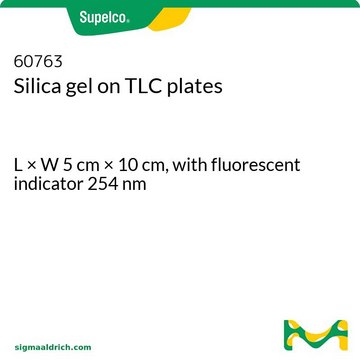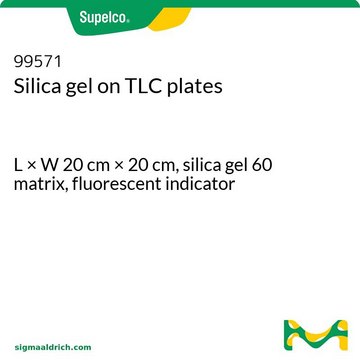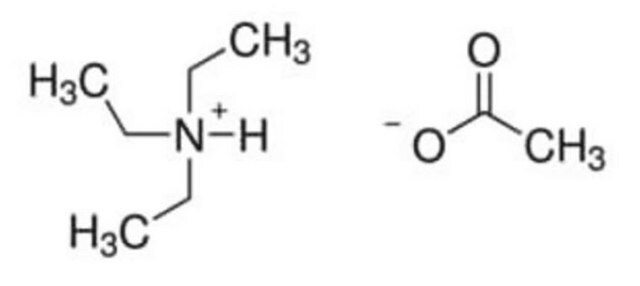91835
Silica gel on TLC Alu foils
with fluorescent indicator 254 nm, silica gel 60 matrix, L × W 5 cm × 10 cm
Synonim(y):
Żel krzemionkowy TLC na arkuszach aluminiowych
Zaloguj sięWyświetlanie cen organizacyjnych i kontraktowych
About This Item
Kod UNSPSC:
41115711
NACRES:
NC.07
Polecane produkty
Materiały
aluminum support
silica gel 60 matrix
jakość
with fluorescent indicator 254 nm
Właściwości
binder Organic Polymer
fluorescent indicator
opakowanie
pkg of 50 sheets
producent / nazwa handlowa
Sigma-Aldrich
metody
thin layer chromatography (TLC): suitable
dł. × szerokość
5 cm × 10 cm
grubość warstwy
200 μm
płytka dł. × szer.
5 cm × 10 cm
wielkość cząstki
8.0-12.0 μm
wielkość porów
60 Å medium pore diameter
Opis ogólny
Żel krzemionkowy to sztywna trójwymiarowa sieć koloidalnej krzemionki. Jest stosowany wyłącznie jako materiał nośny dla aktywnych centrów tytanu(III) w katalizatorach Zieglera-Natty. Żel krzemionkowy pozwala na kontrolowaną fragmentację, w wyniku której powstają jednolite cząstki polimeru o wąskim rozkładzie wielkości cząstek i wysokiej gęstości nasypowej. Żel krzemionkowy jest szeroko stosowany jako materiał warstwowy do TLC. Plaster paryski jest zwykle używany jako środek wiążący, aby mocno trzymać żel krzemionkowy na płytkach TLC. Żel krzemionkowy jest stosowany jako sorbent do folii aluminiowych.
Zastosowanie
Żel krzemionkowy na foliach TLC Alu może być stosowany do chromatografii cienkowarstwowej.
Ta strona może zawierać tekst przetłumaczony maszynowo.
produkt powiązany
Numer produktu
Opis
Cennik
Kod klasy składowania
11 - Combustible Solids
Klasa zagrożenia wodnego (WGK)
WGK 3
Temperatura zapłonu (°F)
Not applicable
Temperatura zapłonu (°C)
Not applicable
Środki ochrony indywidualnej
Eyeshields, Gloves, type N95 (US)
Wybierz jedną z najnowszych wersji:
Masz już ten produkt?
Dokumenty związane z niedawno zakupionymi produktami zostały zamieszczone w Bibliotece dokumentów.
Joseph C. Touchstone
Practice of Thin Layer Chromatography (1992)
A simple method for production of pure silica from rice hull ash
Kalapathy, U., A. Proctor, and J. Shultz.
Bioresource Technology, 73, 257-262 (2000)
Silica gel supported zirconocene dichloride/methylalumoxane catalysts for ethylene polymerization: Effects of heterogenation on activity, polymer microstructure and product morphology.
Janiak, Christoph, and Bernhard Rieger.
Angew. Makromol. Chem., 215, 47-57 (1994)
Nasz zespół naukowców ma doświadczenie we wszystkich obszarach badań, w tym w naukach przyrodniczych, materiałoznawstwie, syntezie chemicznej, chromatografii, analityce i wielu innych dziedzinach.
Skontaktuj się z zespołem ds. pomocy technicznej








